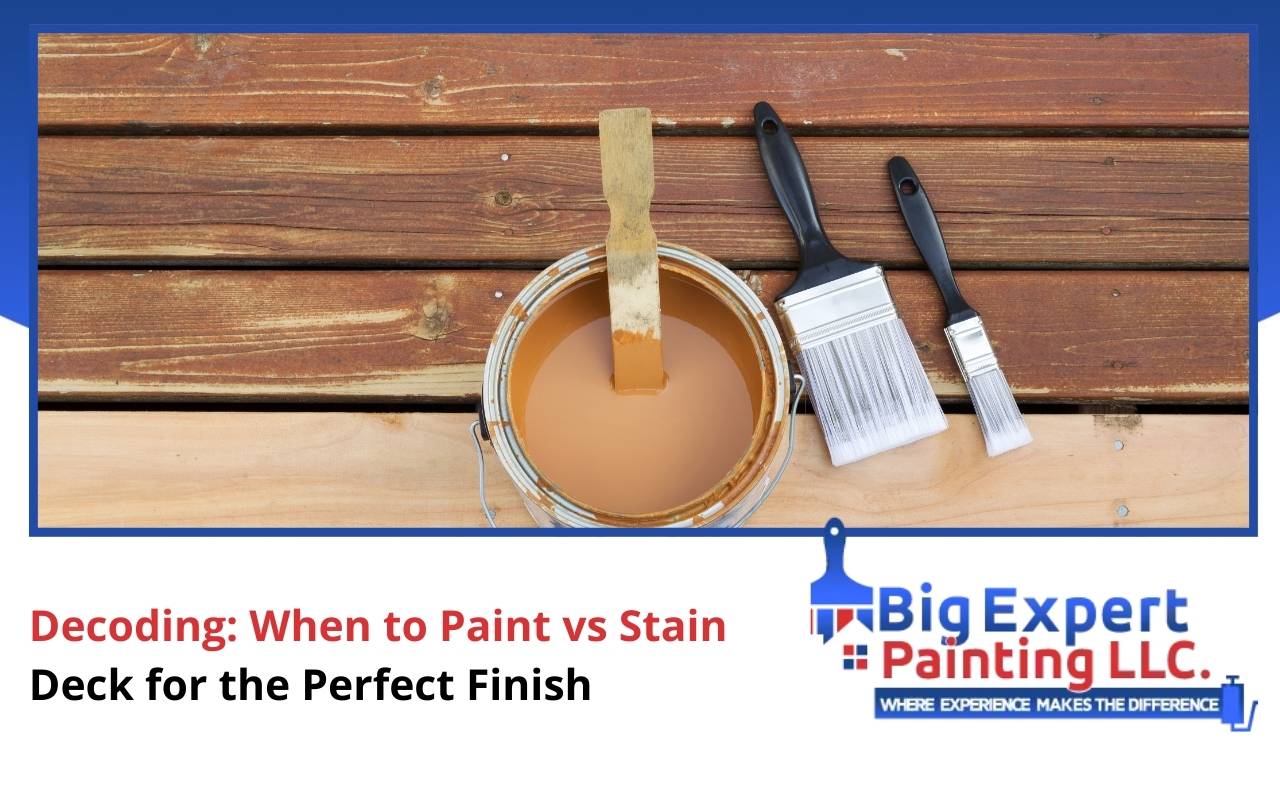
Decoding: When to Paint vs Stain Deck for the Perfect Finish
Transforming your deck into an inviting outdoor oasis often comes down to one crucial decision: when to paint vs stain deck for the perfect finish. This choice can dramatically affect aesthetics and durability. Imagine stepping onto a deck that complements your home’s exterior and withstands the elements while needing little maintenance. Understanding these differences helps you create that ideal outdoor retreat. Although it may feel overwhelming, exploring both options makes the decision easier and ensures lasting beauty.
Differences Between Painting and Staining a Deck
Painting creates a uniform, opaque finish with bold colors. It offers strong protection but may peel if neglected. In contrast, staining penetrates wood and enhances natural grain. It provides warmth and a more organic appearance. While stain may fade faster, it resists peeling and remains easier to reapply. Therefore, choosing when to paint vs stain deck requires careful thought about appearance, maintenance, and durability.
Pros and Cons of Painting Your Deck
Paint offers an extensive palette to match architectural styles. It hides imperfections, creates a barrier against moisture, and extends wood life. However, paint can crack and peel due to climate or heavy foot traffic. Maintenance requires sanding, priming, and touch-ups. Still, if you want bold hues and modern aesthetics, painting could be the right path. If you consider this choice, explore specialized deck painting services in NY for professional guidance.
Pros and Cons of Staining Your Deck
Staining allows wood’s natural charm to shine through. It resists peeling, requires less preparation, and enhances outdoor warmth. Many homeowners appreciate the translucent effect. However, stains fade faster under sun exposure and often need reapplication. Mold and mildew may grow if cleaning is ignored. Even so, stain creates an inviting space connected to nature, especially when applied carefully and maintained.
Considerations for Choosing Between Paint and Stain
Your decision depends on wood type, desired look, and maintenance tolerance. Softwoods sometimes absorb stain unevenly, while tight-grained species respond well to both. Paint offers bold color precision, whereas stain highlights wood character. Maintenance commitment also matters. Since paint requires sanding and priming, stain usually offers simpler reapplication. Reflecting on lifestyle, climate, and upkeep helps answer when to paint vs stain deck effectively.
Factors Influencing Durability: Paint vs Stain
Paint forms a protective barrier, lasting years with proper application. Yet cracks allow moisture to cause damage beneath. Stain penetrates fibers, offering water resistance and graceful fading. While stains may last fewer years, they are easier to refresh. Choosing high-performance exterior products and ensuring regular cleaning extends both finishes’ effectiveness. Thus, evaluating durability helps you decide wisely on when to paint vs stain deck.
Impact of Climate on Deck Finishes
Climate strongly influences finish performance. Humid conditions demand products resisting mildew and water damage. Salty sea air can erode finishes quickly. Freeze-thaw cycles crack films and stress wood. Therefore, choose formulas suitable for your climate zone. Long Island weather, for instance, requires special attention to durability. Considering these climate effects is crucial before deciding when to paint vs stain deck.
Maintenance Requirements: Paint vs Stain
Painted decks need frequent inspections to catch peeling. Repainting every few years keeps them safe and appealing. Cleaning with mild detergents prevents mold. On the other hand, stained decks require lighter care but more frequent applications. Power washing, cleaning, and restaining every few years preserve beauty. Regardless of choice, consistent maintenance ensures long-lasting performance and a welcoming outdoor space.
FAQs About Deck Painting and Staining
How often should I repaint or restain my deck?
Paint typically lasts several years, while stain may need refreshing sooner. Both depend on climate and usage levels.
Which option better shows natural wood grain?
Stain enhances the wood’s natural texture. Paint hides it under opaque coverage for a bold, uniform appearance.
Is one easier to maintain than the other?
Stain requires more frequent applications but less prep. Paint lasts longer but demands extensive preparation and touch-ups.
Can I switch from stain to paint later?
Yes, but you must strip old stain and properly prepare the surface. This ensures strong paint adhesion and durability.
Achieving the Perfect Finish: Best Practices
Proper preparation is the foundation of success. Remove old finishes, sand imperfections, and fix structural issues. Then, choose the right products by testing small areas first. Align your design with landscaping and home exterior for a cohesive look. Apply finishes during moderate weather to avoid curing problems. Always use high-quality brushes or rollers for even coverage. By following these best practices, you can confidently decide when to paint vs stain deck for optimal results.
Longevity and Aesthetics: Comparing Paint and Stain
Painted decks typically last longer with bolder colors but risk peeling. Stained decks fade gradually yet showcase natural grain. While paint offers dramatic transformations, stain embraces subtle, organic looks. Your choice should reflect lifestyle preferences and visual goals. To maintain professional results, consider expert residential painting in Babylon NY services.
Making the Right Choice for Your Deck
Ultimately, deciding when to paint vs stain deck comes down to your vision and willingness to maintain it. Paint provides bold, lasting coverage, while stain highlights natural wood beauty. Sampling small sections allows you to preview results. For tailored advice and a flawless finish, reach out through our contact page to consult professionals who can transform your deck into an inviting oasis.
